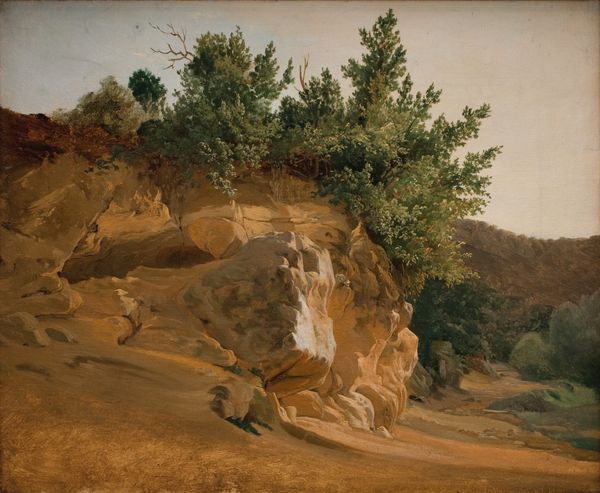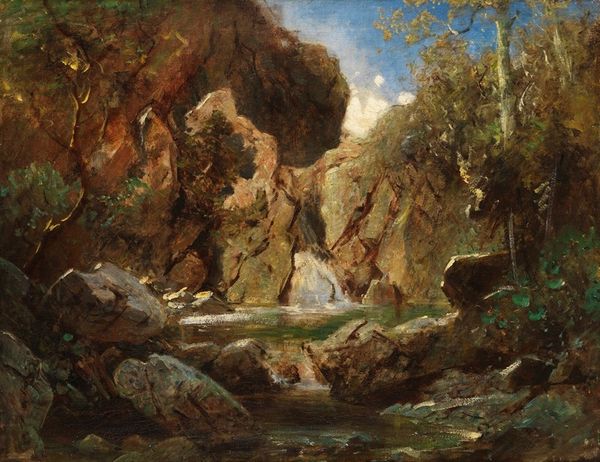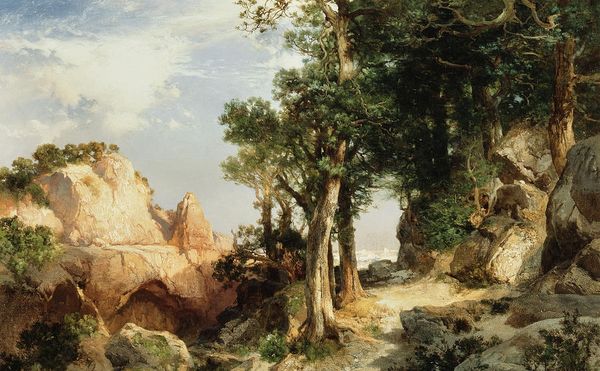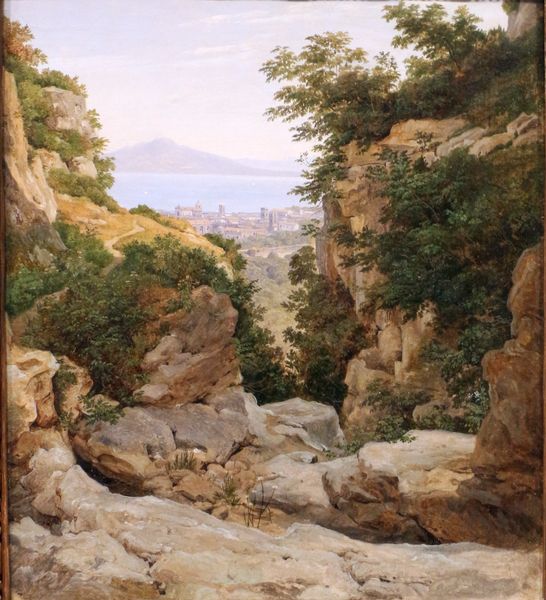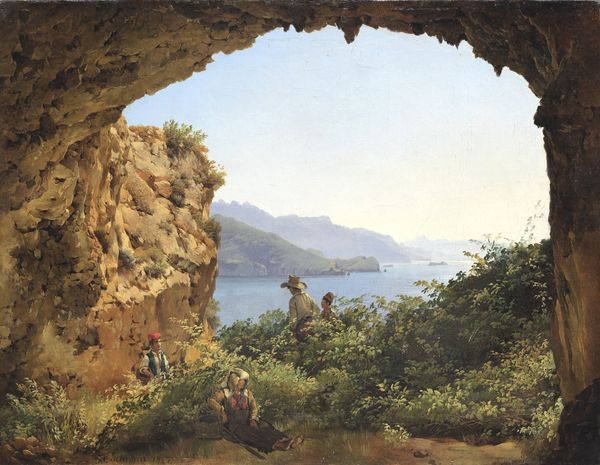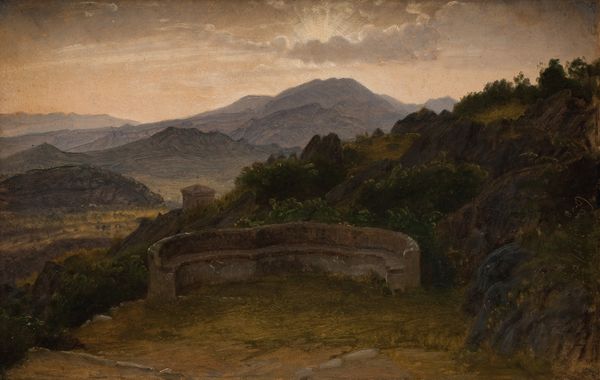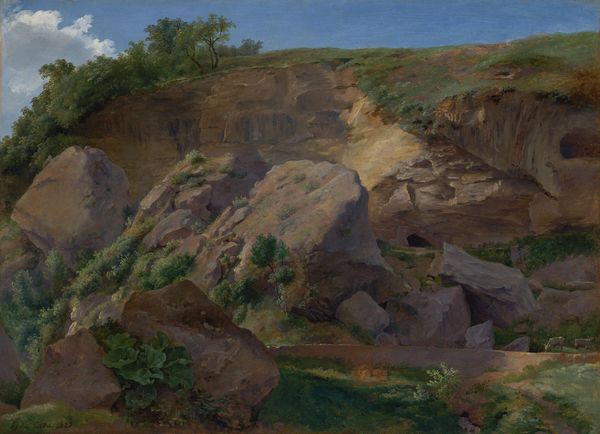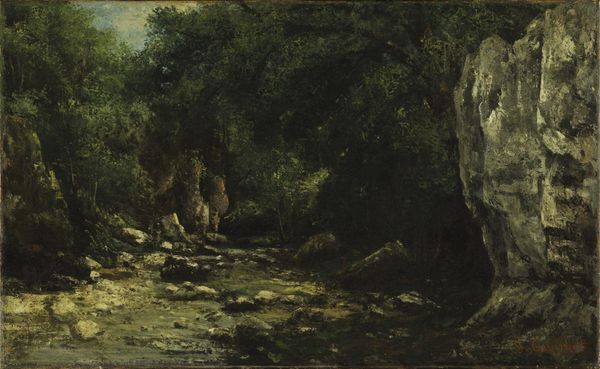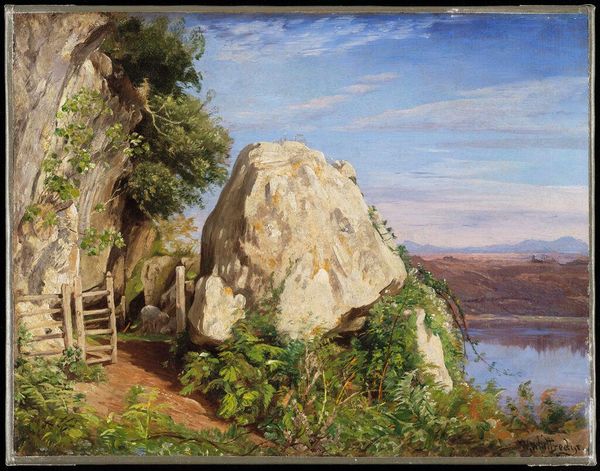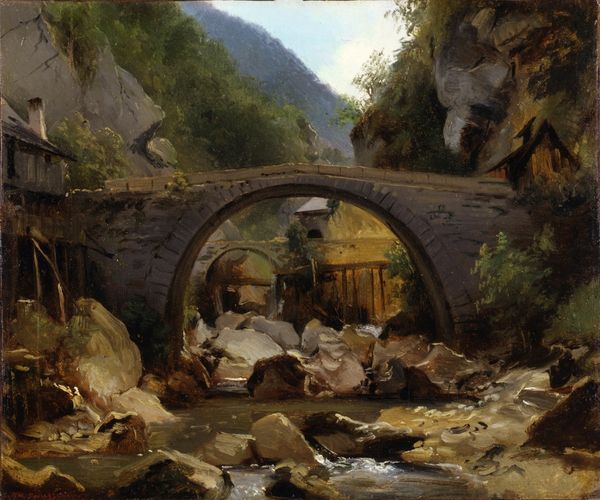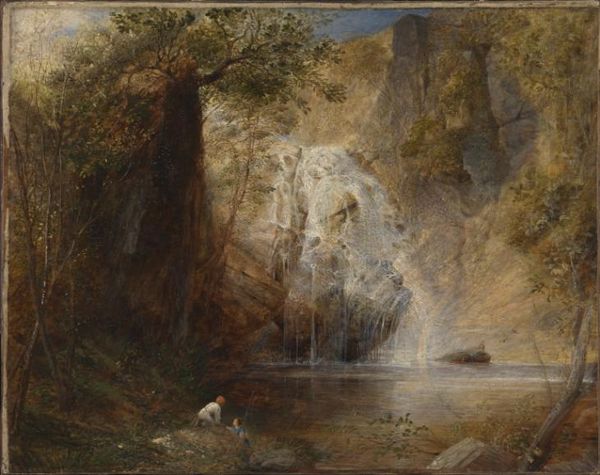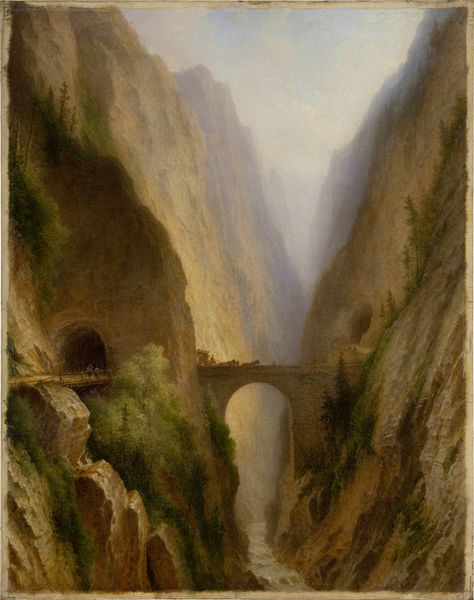
oil-paint, oil, canvas
#
düsseldorf-school
#
16_19th-century
#
oil-paint
#
oil
#
landscape
#
figuration
#
oil painting
#
canvas
#
romanticism
#
realism
Copyright: Public Domain
Carl Morgenstern's "Arched Rocks by Civitella II" captures a primal scene in oil, with the rock arch serving as a powerful symbol. This archway, draped with verdant life, frames a distant landscape, acting as a threshold between the known and the unknown. The arch motif has echoed through art history, from ancient Roman triumphal arches to Renaissance portals. These structures often mark transitions, both physical and spiritual. In classical art, an arch might signify victory, while in religious contexts, it can represent passage into sacred spaces. Here, the natural arch, unadorned yet majestic, evokes a sense of timelessness. Consider the psychological weight of such forms. Jung might suggest the arch represents an individuated self, bridging the conscious and unconscious. The emotional resonance of this image lies in its evocation of nature’s grandeur, subtly inviting us to contemplate our place within the eternal cycle. The cyclical nature of such forms, and the emotions they trigger, persists through time, subtly influencing our perception and appreciation.
Comments
No comments
Be the first to comment and join the conversation on the ultimate creative platform.
